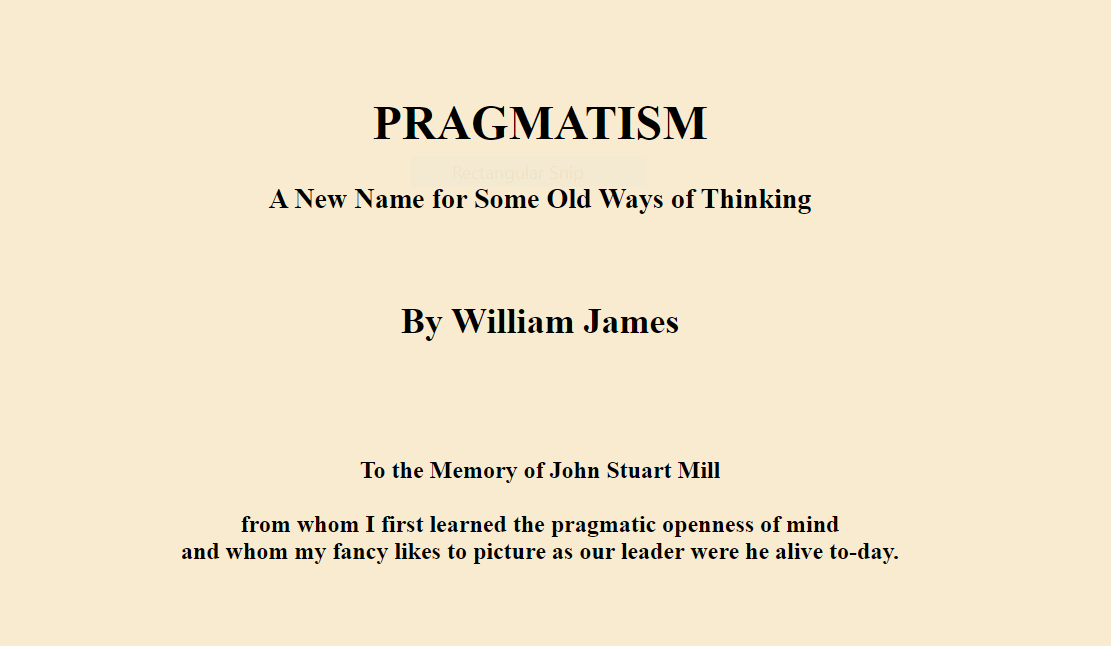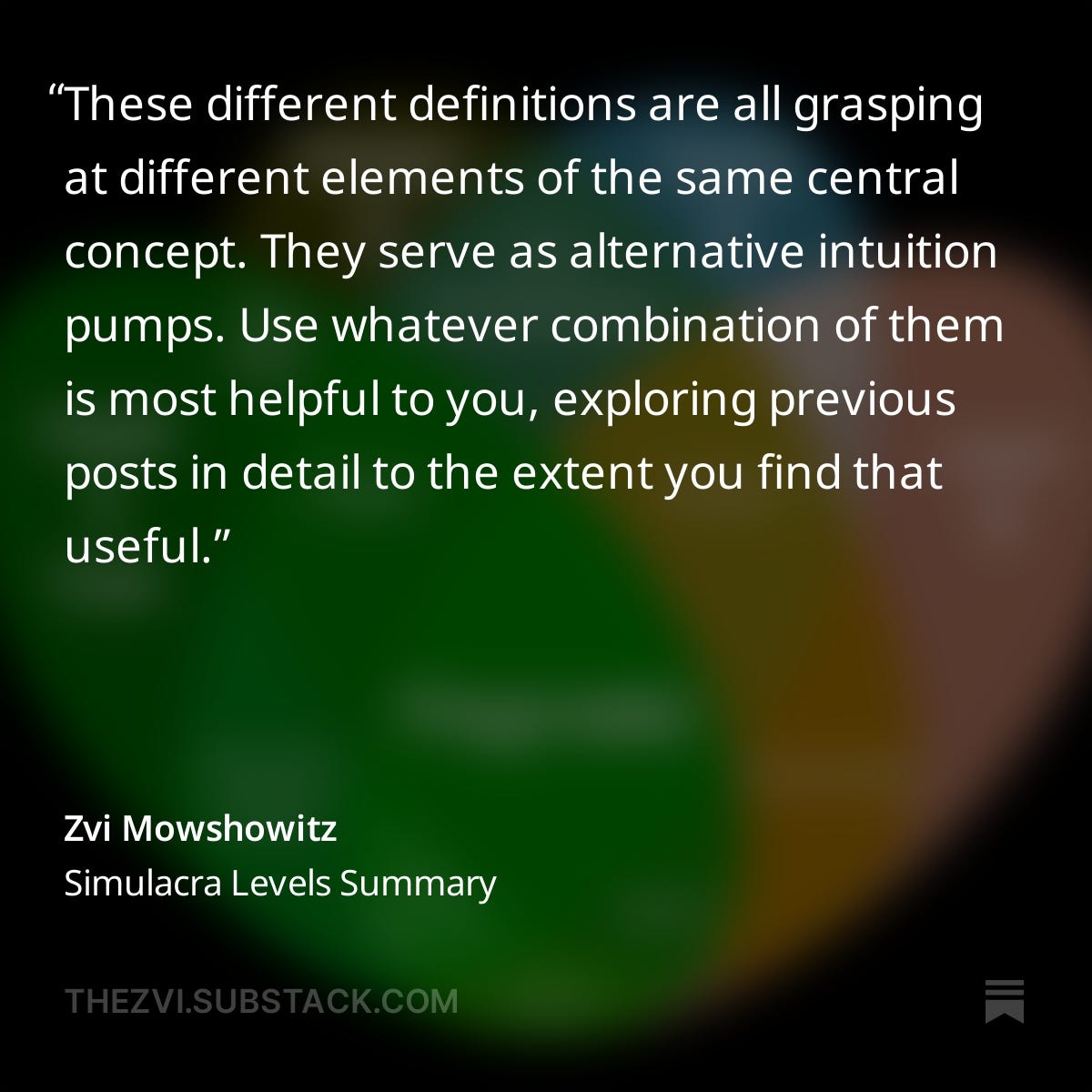This is part two of the essay On Techno-pragmatism. Part 1 is available here.
One underrated element of the recent OpenAI comedy of remarriage was the role the rank-and-file knowledge workers played in the story of the breakup and reuniting of OpenAI Global, LLC (capped profit company) played by Sam Altman and OpenAI, Inc (nonprofit), played by the board. Perhaps the promise of their slice of the unexpectedly profitable ChatGPT pie made the workers’ threat to decamp to Microsoft and their return inevitable. Or perhaps, the reunification is a sign of their commitment, not just to their leader, but to each other and their work together to build the next big thing. Either way, we should pay more attention to their aspirations and beliefs. Engineers are empiricists when doing their day jobs but tend toward idealism and rationalism when it comes to thinking about the social value of their work. Perhaps a bit of James’s mediating pragmatism could help their worldviews cohere better?
Many of them inhabit the same contradiction as their role models and leaders: it is socially necessary to build AGI and it will likely kill us all once completed. Ted Chiang helped explain this in his 2017 Buzzfeed essay: “The way they envision the world ending is through a form of unchecked capitalism, disguised as a superintelligent AI. They have unconsciously created a devil in their own image, a boogeyman whose excesses are precisely their own.” And it is not just one devil. Devils such as Shoggoths, Basilisks, and paperclip-making machines feature prominently in their apocalyptic literature. The religious writing about their imminent Promethean achievements is fascinating, and easy to make fun of, making it especially rich territory for tough-minded skeptics writing the first draft of the history of generative AI. The doctrinal disputes and dogmas of the new religion are interesting, but less important than understanding the varieties of this generation’s religious experience. Tara Isabella Burton’s Jamesian essay Rational Magic in The New Atlantis examines the beliefs of some of these spiritual seekers.
The best-known writers of the new rationalism are Eliezer Yudkowsky and Scott Alexander, but Zvi Mowshowitz is the most interesting voice to emerge. He has written a meditation inspired by Robert Jackall’s Moral Mazes that updates William H. Whyte’s The Organization Man for today’s knowledge worker. His essay The Four Children of the Seder as the Simulacra Levels is an “originalist” reading of the four questions of the Seder that draws on Baudrillard and the new rationalists to argue for…well, I’m not entirely sure, but it is an excellent piece of literary criticism. His Substack Don’t Worry about the Vase is a wide-ranging exploration of the discourse about AI and several other ongoing concerns. I disagree with most of his assumptions but I love his style, which is pragmatical and open. He explains his beliefs using reason and principle but holds them loosely. To an extent unusual among the new rationalists, Mowshowitz treats Bayesian or probabilistic thinking as a method for open inquiry rather than as a new form of logical positivism.
Probabilistic thinking as popularized by Philip Tetlock’s Superforecasting and Annie Duke’s Thinking in Bets is a way of thinking about the future that is quite pragmatical in its mediation between facts and beliefs. If you accept James’s description of truth as something that happens to an idea, then you can see the value of thinking in terms of probabilities in an indeterminate world. In situations like playing a hand of poker or diagnosing a medical condition, the probability of specific outcomes can be calculated by updating beliefs based on new facts. When another card is played or a new test result comes in, Bayesian statistics calculates and updates probabilities based on the new information.
When this approach moves from being a method to account for change over time about an upcoming event and instead becomes an interpretive framework for thinking about events in a wide-open future, it becomes increasingly tender-minded. What counts for evidence and how one arrives at an initial probability matter. Events further out in time are less subject to empirical analysis and so consideration becomes more a question of principled belief. Who will be elected president in 2024 has evidence in the form of facts such as who is running and what the early polls suggest about the race. The relevant facts about who will win the election in 2028 are wide open and the number of variables and amount of relevant data are vast. To answer questions about the distant future–say the start date of the next world war or the emergence of a machine intelligence with capabilities similar to that of humans–requires beliefs about initial conditions and relevant variables. Chaos theory is more useful than Bayesian inference for understanding events with a longer time horizon, but the new rationalists want to predict the future, not contemplate indeterminacy. The mathematics of fractals won’t power a crystal ball. Neither will Bayes Theorem but that does not stop the new rationalists from using it to forecast the end times.
Much like Descartes, Leibniz, or Gödel using logic to prove the existence of a Judeo-Christian God, the new rationalists apply Bayesian concepts like p(doom)—the probability AI will doom humanity to non-existence— to questions they have arrived at through a deep engagement with cultural texts rather than verified facts. This makes their tough-minded critics like Gary Marcus and Emily Bender sound like Diderot in A Skeptic’s Walk or Christopher Hitchens in The Portable Atheist. And it is, I suspect, Tyler Cowan’s point when he called the rationalist community, “just another kind of religion.”
The significance of this religiosity is its proximity to the power and money surrounding AI. It plays a surprisingly large role in shaping the development and regulation of artificial intelligence, in part because some of the chief builders seem to be true believers. Thus, skepticism is warranted, even urgent. It starts with pointed questions about the actual capabilities of the large foundational models that seem to be intensifying the rationalists’ millenarian beliefs.
Occasionally, however, they say something that horrifies and disgusts us. In this, they are like rehomed parrots who learned to make sounds in their previous owner’s bedrooms or racist living rooms.
Emily Bender and the other authors of On the Dangers of Stochastic Parrots: Can Language Models Be Too Big? have provided the essential metaphor for deflating the hype and over-excited thinking about generative AI. Because they both speak without understanding, the association unwinds the sails of those imagining human-like capabilities in LLMs because they generate language. In her beautifully illustrated exploration of Bender’s argument, Angie Wang shows humans, even small ones, are not stochastic parrots. LLMs do not understand the social contexts of the words they extrude. They are not embodied in complex biological systems. LLMs are machines that use huge datasets to produce text based on patterns and predictions. Thanks to the labor of poorly paid workers in the global south and the freely provided effort of early customers, models have been programmed to say things that mostly amuse and delight us. Occasionally, however, they say things that horrify and disgust us. In this, they are like rehomed parrots who learned to make sounds in their previous owner’s bedrooms or racist living rooms.
To house-train them for the market, the owners of the largest parrots have been strengthening the guardrails to protect us from the disturbing human realities that lurk in the datasets. Because they stole much of the data and are now facing legal action, the owners are unwilling to share much about the datasets used in the latest models or to allow independent researchers to study how the machines arrive at their outputs. This works out well for giant technology companies as ill-informed speculation drives sales of their current product line. There is a lot of money to be made (and lost) during speculative bubbles, and so the tidal forces of venture capital and consumer markets are pulling us away from concrete, science-based answers to questions about how the technology works.
Technology as it has been developed and deployed by consumer and global capitalism is, of course, the standard framework for skeptics on the left. But this tough-minded critique has not had much impact on the political economy of technology. As consumers and as workers, we do not seem all that interested in significant reform, to say nothing of revolution. In From Tech Critique to Ways of Living, Alan Jacobs offers Standard Critique of Technology, or SCT as a term to describe an intellectual tradition including Neil Postman, Ursula Franklin, and Ivan Illich that has analyzed the ways “powerful technologies come to dominate the people they are supposed to serve, and reshape us in their image.” The task of the critic, Jacobs writes, is to find “tendencies or affordances of our technologies” that serve human needs “and, on both social and personal levels, choose the holistic, convivial ones.” I think this description fits the kind of democratic social criticism offered by pragmatists, though Jacobs charts a different course, Daoism by way of Heidegger, to find a positive direction.
Daoism is, of course, much older than pragmatism, but they share a history of contentious debate by adherents over the meaning of their core terms and concepts as well as a shared tendency, as Jacobs says, “toward pluralism, perspectivalism, skepticism, political equality and freedom.” Which is to say that Daoism and pragmatism offer ways of thinking that are useful in the current moment of extreme positions clustered around a willfully blind optimism or a resigned pessimism.
What James says of pragmatism could also apply to Daoism. Pragmatism serves as “a mediator and reconciler.”
She unstiffens our theories. She has in fact no prejudices whatever, no obstructive dogmas, no rigid canons of what shall count as proof. She is completely genial. She will entertain any hypothesis, she will consider any evidence.
Much can be said (and has) of James’s figuring pragmatism as a woman. I will have my say in a future essay about the relationship between feminism and pragmatism. Let me end instead with an argument for why I believe pragmatism’s mediating force is a good answer to the question of where we go from here.
In concluding his seventh and final lecture, James acknowledges the value of both temperaments yet does not simply muddle them into a directionless in-betweenism. He offers us faith, not in God or Reason, but a faith nonetheless. “Pragmatism can be called religious, if you allow that religion can be pluralistic or merely melioristic in type.” Such a faith requires us believers to “postpone the dogmatic answer” while granting the “radically tough” their “sensible facts” even as we also grant the “radically tender,” their more “monistic form of religion.”
Pragmatism takes the pluralism of the strong-minded and a narrowed version of the religiosity of the tender-minded, combining them into a faith in democratic action. This faith offers something to those who believe that using capital markets to develop technology creates prosperity, especially when those markets are effectively regulated and some of the wealth of the winners is redistributed. Pragmatism also offers a way back into the light to the pessimists who have lost their faith (or are still clinging to the ghost of it) that capitalism’s contradictions will somehow bring about a revolution that saves us all.
This pragmatist faith will seem weak-willed to the optimists and weak-minded to the pessimists. It does not offer any guarantees and has admittedly been something of a disappointment in the century since Jane Addams, John Dewey, W.E.B. Du Bois, and other less-known writers, applied pragmatist philosophical ideas in their democratic cultural criticism and social movements. While it is possible to trace a line consisting of a handful of journalists, social scientists, historians, literary critics, philosophers, and bloggers who have worked in the pragmatist tradition up to and beyond a sort of revival in the 1990s, the broader culture has mostly ignored it in favor of stronger, more polarizing approaches. Yet pragmatist ideas are still lying around, alive and available to anyone who would make use of them.1
𝑨𝑰 𝑳𝒐𝒈 © 2024 by Rob Nelson is licensed under CC BY-SA 4.0.
The echo of Milton Friedman is intentional. In case you don’t know it, here is the full quote from Capitalism and Freedom: “Only a crisis - actual or perceived - produces real change. When that crisis occurs, the actions that are taken depend on the ideas that are lying around. That, I believe, is our basic function: to develop alternatives to existing policies, to keep them alive and available until the politically impossible becomes the politically inevitable.”






